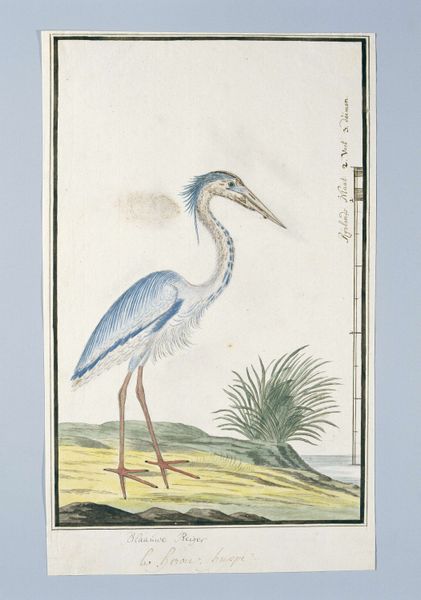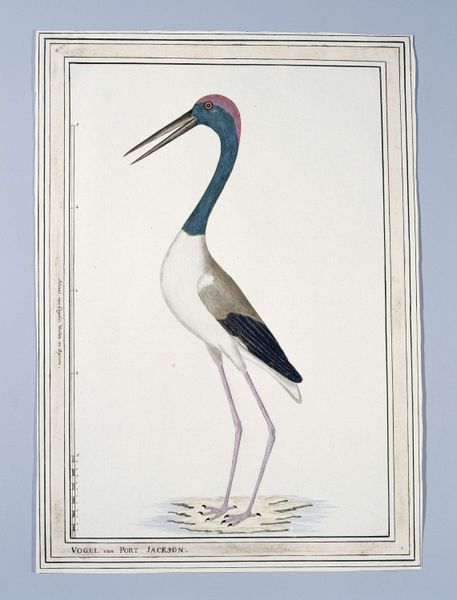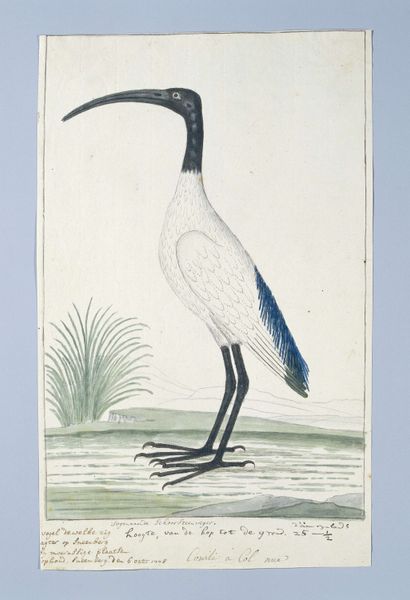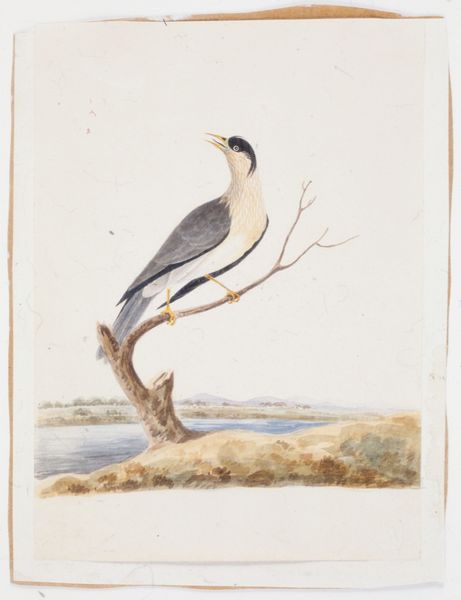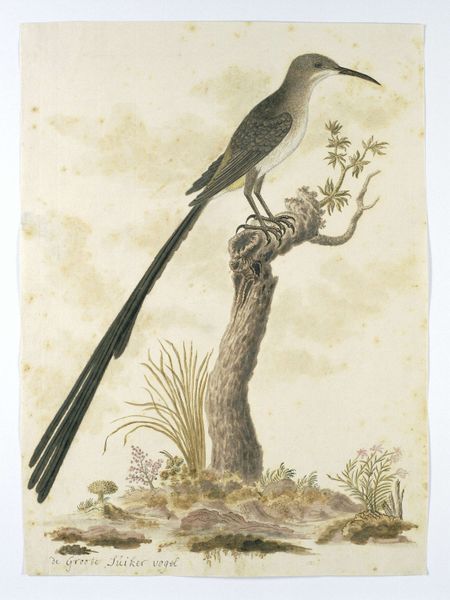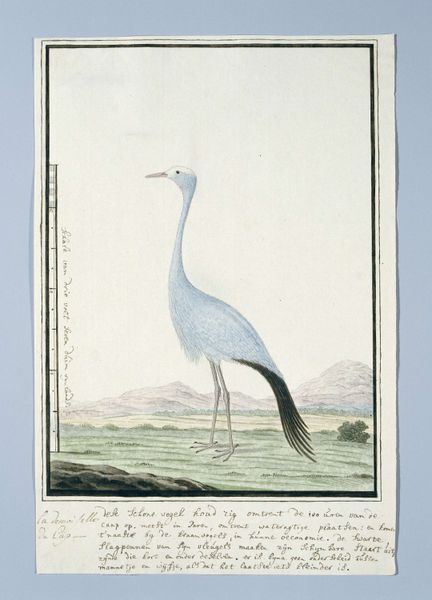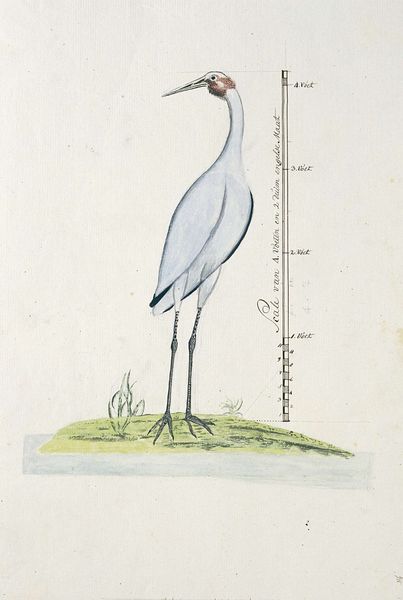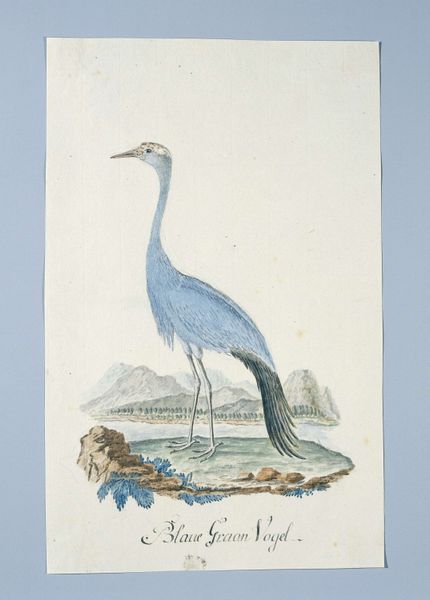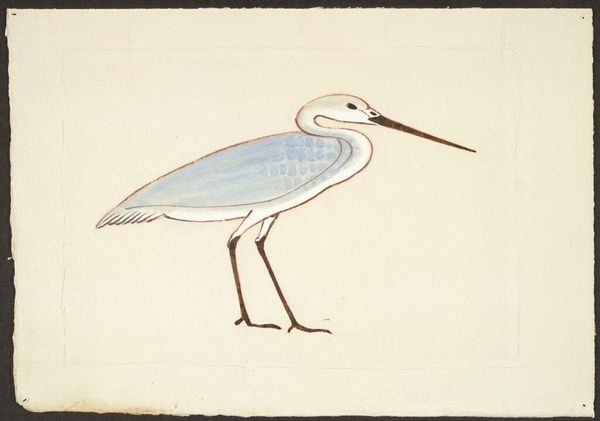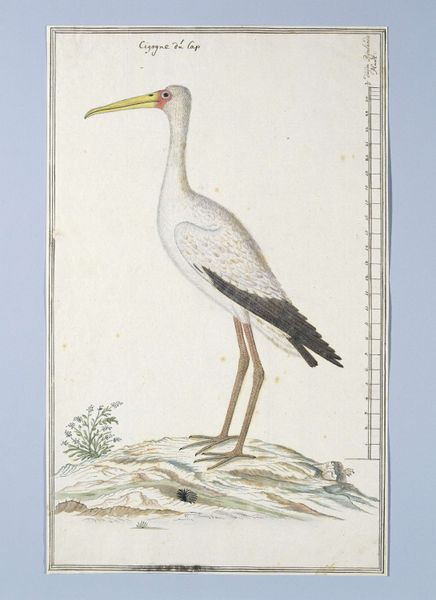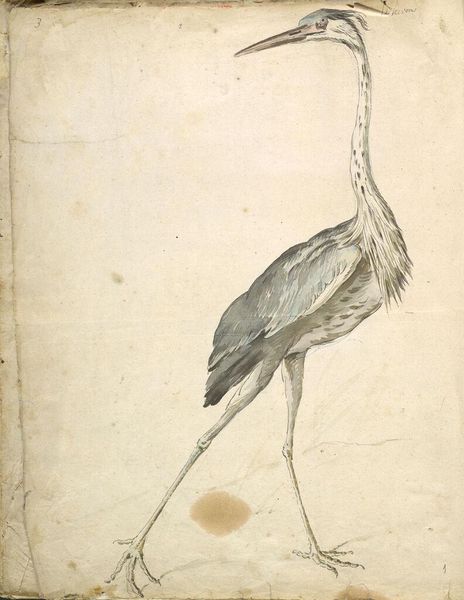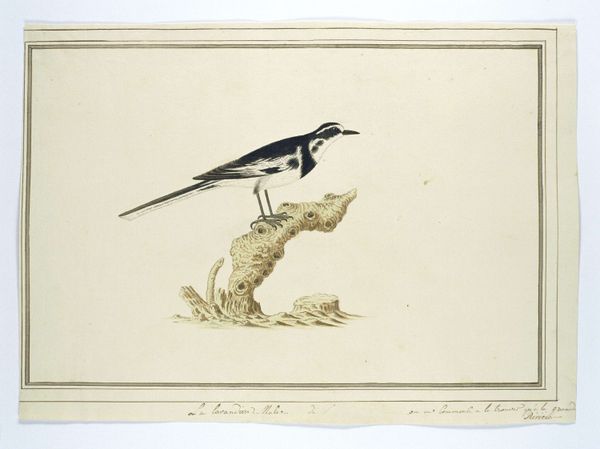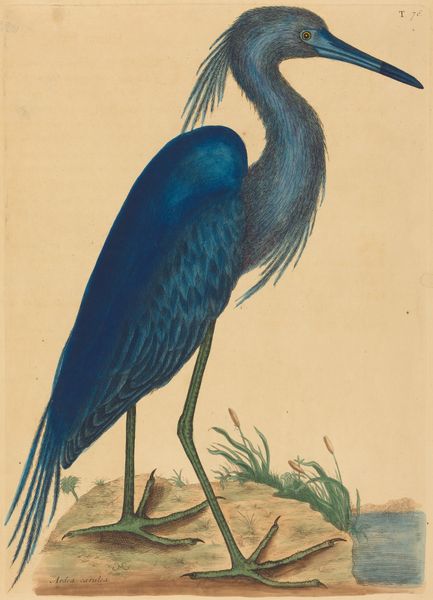
drawing, watercolor
#
drawing
#
landscape
#
watercolor
#
watercolour illustration
#
naturalism
#
watercolor
Dimensions: height 660 mm, width 480 mm, height 394 mm, width 249 mm, height 250 mm, width 249 mm
Copyright: Rijks Museum: Open Domain
Editor: Here we have "Grus rubicunda," also known as the Brolga or Australian crane, a watercolor and ink drawing made between 1770 and 1780 by George Raper. It’s a rather straightforward depiction, wouldn't you say? I find the limited color palette quite striking, almost austere. What do you see in this piece? Curator: Precisely, the austerity contributes significantly to its effect. Focus, first, on the articulation of form. Note how the artist utilizes delicate washes of color to delineate the bird's anatomy, creating a subtle interplay between volume and flatness. Editor: I see what you mean. It's not hyper-realistic, but there's a clarity to the shape. Is the lack of background significant? Curator: Indeed. The blank background throws into sharp relief the bird's contours, rendering it as a study of line and shape. Notice also the inclusion of what seems to be a scale; this introduces an element of objective measurement, influencing how we view the overall composition. It is not just an image, but an assessment. Editor: That’s interesting, almost like a scientific illustration rather than a purely artistic one. How does that affect our understanding? Curator: By acknowledging the structure in representational modes, it emphasizes the process of observation itself, foregrounding the way in which we construct meaning through visual analysis. Editor: So, the drawing itself becomes a kind of visual experiment? Curator: Yes, in effect it allows us to see how visual presentation impacts how meaning is derived, in essence turning it into an exercise about visual understanding itself. Editor: Fascinating. I had not considered that the formal aspects could speak so loudly. I am glad you prompted me to see that it is more than meets the eye. Curator: Indeed. Such details demonstrate that even seemingly straightforward artworks can contain complex layers of meaning when we closely examine them.
Comments
No comments
Be the first to comment and join the conversation on the ultimate creative platform.
